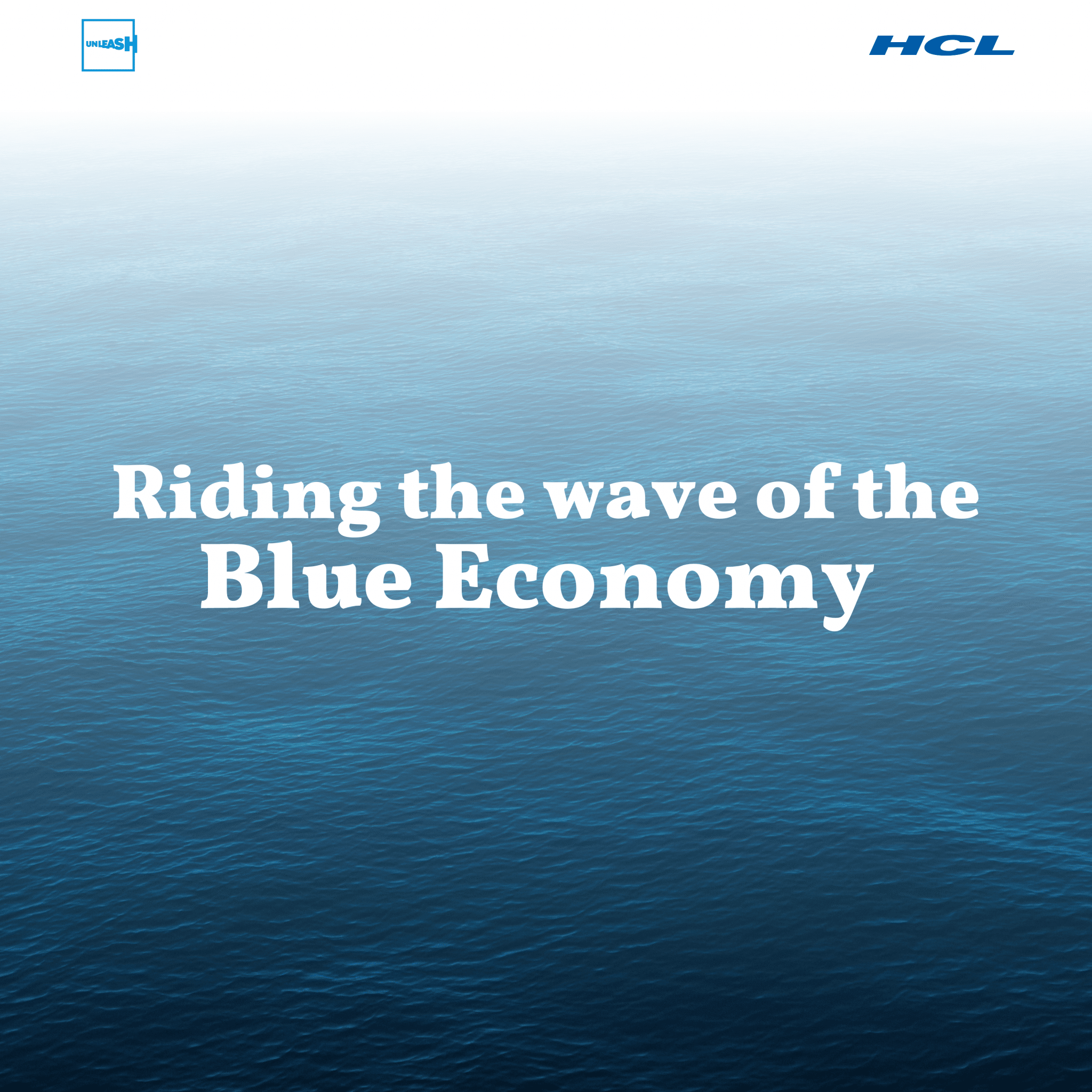
Riding the Blue Economy Wave
Author: HCL
What is the Blue Economy?
The idea behind a “blue economy” is simple but important, conserving the planet’s ‘blue’ resources: our oceans. It was first conceived at the Rio+20 United Nations Conference on Sustainable Development in June 2012 and is considered an advancement of the ‘green economy’ concept. It is defined by the World Bank as “the sustainable use of ocean resources for economic growth, improved livelihoods, and jobs while preserving the health of the ocean ecosystem.” According to Organisation for Economic Co-operation and Development (OECD) projections, by 2030, the “blue economy” could outperform the growth of the global economy, both in terms of value-added and employment.
The need for a Blue Planet
Oceans make up 72% of the Earth’s surface and are a source of livelihood for 10-12% of the world’s population (Our Ocean, 2016). They also serve as a means of transport for 80% of global trade (UNCTAD, 2012), and the planet’s seabed currently provides 32% of the global supply of hydrocarbons in form of crude oil and natural gas. The oceans also offer immense potential for the development of “blue energy” from wind, wave, tidal, thermal, and biomass sources. Ocean-related industries such as fisheries, tourism, and maritime transport are also a part of the blue economy.
However, besides the economic opportunities bestowed by the oceans, they are also home to an estimated 50-70% of all flora and fauna on Earth, and provide 50% of the world’s oxygen, making oceans a precious natural resource. Unfortunately, unbridled industrial activities such as overfishing, deep-sea oil drilling, maritime equipment and construction, offshore mineral extraction etc. have begun interfering with the natural activities in the ocean.
One of the worst victims of this is the natural aquatic ecosystems. According to the latest Food and Agriculture Organisation of the United Nations (FAO) data, 87% of global fish stocks are fully or over-exploited, increasing pollution levels are causing immense biodiversity loss, and large-scale unsustainable coastal development is harming marine ecosystems through ocean acidification. Destruction of marine habitats due to over-fishing, pollution and climate change is creating dead zones, devoid of oxygen and life. These oxygen-deprived dead zones can further impact environmental conditions: low-oxygen waters will release increased amounts of nitrous oxide (N2O) into the atmosphere which will further exacerbate the impact of global warming and contribute to ozone “holes” in the upper atmosphere.
It is the need of the hour to realize that the world’s industrial ecosystem is dependent on oceans, which in turn are dependent on the natural life that resides within them. Thus, it is no surprise that the preservation of the natural aquatic ecosystem is a priority in realizing our dreams of enabling and harnessing a blue economy.
Sustainable collaboration as a way forward
Tackling an issue of such magnitude requires much larger and more collaborative efforts. This is where businesses and enterprises can drive meaningful impact. Businesses bring immense resources, not just from a financial perspective, but also network, infrastructure, technical skills, and operational expertise, organizations enabling not-for-profit organisations to multiply their impact manifold when it comes to enabling sustainable change.
With a massive workforce and multiple initiatives, HCL Group has been at the forefront of bringing about sustainable changes and contributing to the Sustainable Development Goals (SDGs). Continuing this initiative further, HCL Group has proudly entered a year-long partnership with UNLEASH in 2022, a global innovation program for the UN Sustainable Development Goals, to mobilize youth and develop innovative solutions to promote aquatic ecosystem conservation. These solutions will aim to tackle challenges from ‘source’ (mountains & glaciers) to ‘sink’ (oceans and seas) and their links to terrestrial ecosystems. Specifically, the partnership will allow youth to develop solutions encompassing SDG 14 (Life below water) and SDG 15 (Life on land) and explore synergies with other SDGs as well. During the process, they will be guided by industry experts and receive hands-on support to ensure that solutions are relatable to the context and feasible in practice.
We look forward to exploring and supporting innovative solutions proposed by our youth to further a sustainable blue economy.
As Jacques-Yves Cousteau, French oceanographer, and marine conservation pioneer, succinctly says, “The sea, the great unifier, is man’s only hope. Now, as never before, the old phrase has a literal meaning: we are all in the same boat.”

